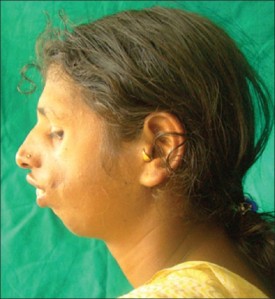Jaw Cyst
Jaw cyst is a cavity which is filled with fluid or soft material. It is basically, lined by an epithelium. The fluid exerts pressure which is internal for the cyst and therefore there is growth of the cyst. Cyst in the human body are most prevalent in the jaws i.e. maxilla and mandible. So jaw cysts are the most important pathological disorders in dentistry.For more details,please login to www.aesthetica.co.in
Tooth impactions and various dental infections increase the chances of the occurrence of jaw cysts.
Jaw cysts are mainly classified into odontogenic and non-odontogenic cysts. Non-odontogenic cysts are also called as developmental cysts. Some of the important and commonly occurring odontogenic jaw cysts are radicular cyst, dentigerous cyst and odontogenic keratocyst. Developmental jaw cysts are further classified into cysts of jaws, cysts including the soft tissues and cysts with unknown etiology. Nasopalatine duct cyst is the most common developmental cyst.
Cysts of the jaws are of great importance because they usually do not show any prominent signs and symptoms. They come into the picture once they are secondarily infected. In case, the cyst has not expanded beyond the anatomical structures in and around the jaws there is no prominence seen externally by the dentist. So it becomes quite difficult to diagnose the presence of any cyst. Due to increased pressure a part of cortical plate is also affected in the initial stages. Then with the progression of the cyst it becomes prominent externally in the later stages. A cyst can become acutely infected due to which there can be discharge of the pus into the oral cavity. This causes some discomfort to the patient in the later stages. There will be no altered sensation when the cyst expands slowly. Inferior alveolar nerve supplies the lower lip and chin. So, due to the increase in the size of the cyst, the inferior alveolar canal gets covered in the later stages. In the cysts of aggressive nature, the sensation of the nerves in the area of the cysts is badly affected.
The diagnosis of the cysts in the jaws is done with the help of the radiographs. The preferred radiographic methods are routine radiographs. On the radiographs, the cyst is seen dark i.e. radiolucent and the boundaries are seen as white line i.e. radiopaque around the dark areas. This provides a clear look and easy diagnosis of the cyst in the jaws. Aspirating fluid from the cyst also helps in diagnosing the presence of the cyst and its type as most of the cysts has characteristic fluid color and texture which can be seen on aspiration.
When the treatment of the cysts is considered then marsupialization and enucleation is considered. Marsupialization involves the creation of the window in the affected area. The fluid or soft content in the cyst is drained and then the window is left to get closed. With time eventually it gets closed on its own. Enucleation is the complete removal of the cyst. In case of large cysts and complicated cases, enucleation is followed by the marsupialization. Curettage is also used with enucleation when there is a need of removal of a part of the surrounding bone.




